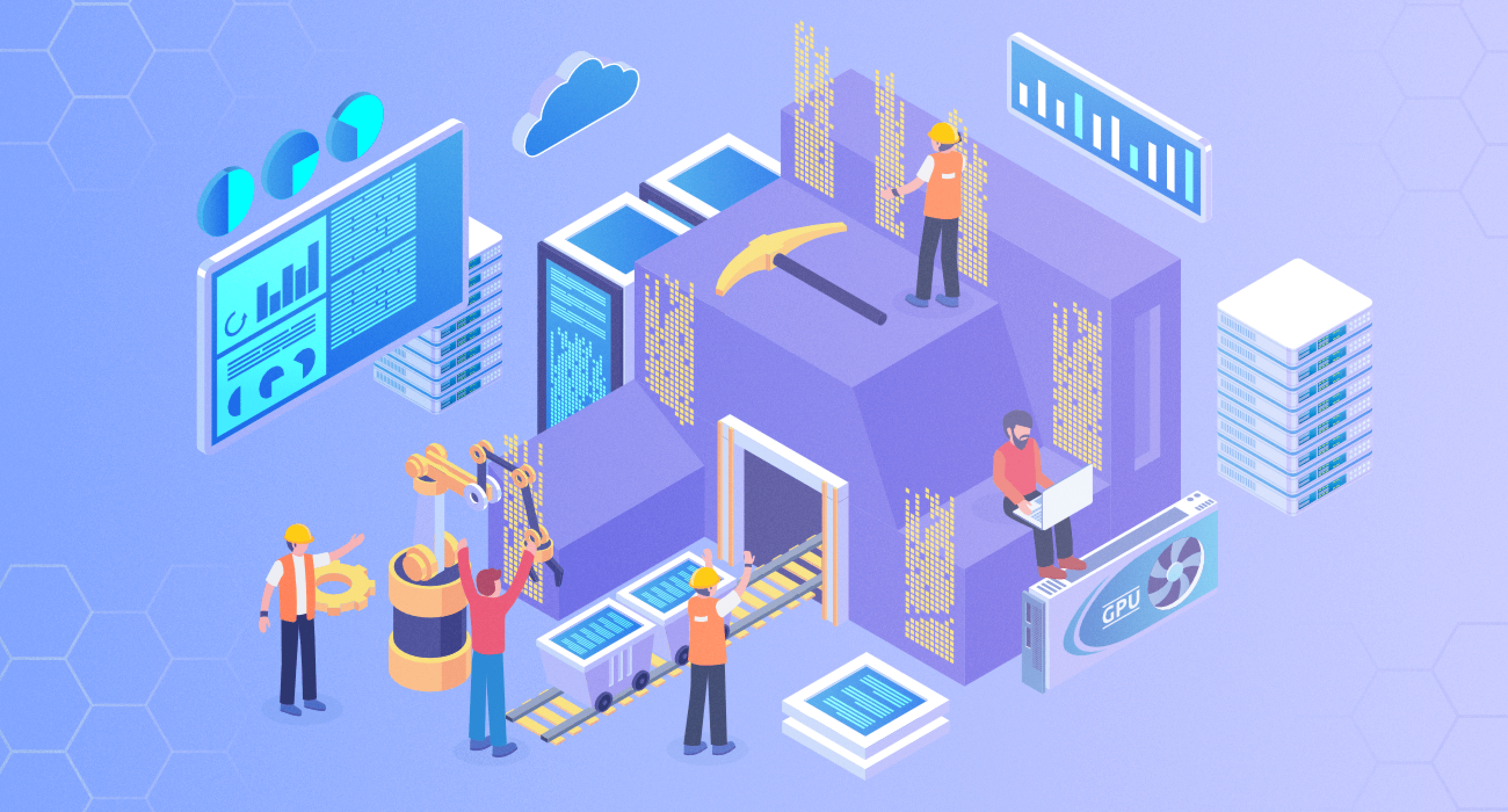In this digital era that we live in, we are surrounded by big data. The fantastic part is, that it has been forecasted to grow at the rates of knots in the next decade. The ironic fact is that we have enough data in hand but lack in practically using this data effectively. The reason is, that all this data that we see around creates lots of noise that is especially difficult to mine. And, that's where using data mining techniques comes to the rescue.
In essence, we have created lots of unstructured data. However, we are experiencing failure in significant data initiatives. The knowledge is more hidden deep down inside. If we do not employ powerful tools or techniques to mine such data, it will become impossible to benefit from it.
This is where data mining techniques come into the picture.
In the forthcoming sections of this write-up, I will provide the top data mining techniques for 2022. However, before that, let’s look at the definition of data mining techniques.
What are Data Mining Techniques?
The techniques utilized to refine data to find previously unknown, valid patterns and relationships in massive data sets are called data mining techniques.
These techniques include data mining algorithms, data mining models, and data mining processes to intercept machine learning, database management, and statistics to better understand how to process and make conclusions from vast chunks of data.
The classification in data mining techniques is done in the following order:
1. Classification
With the help of this analysis, you can retrieve critical and relevant information about data and metadata. These types of data mining methods can help classify data into different classes.
2. Clustering
Clustering analysis is one of the best data mining methods employed to ascertain data similar to each other. With the help of this process, you can comprehend the differences and similarities between the data.
3. Regression
Regression analysis is one of the data mining methods used to identify and scrutinize the relationship between variables. You can use it to determine the likelihood of a specific variable, given the availability of other variables.
4. Association Rules
This is one of those data mining techniques that help find the association between two or more items. It discerns an unknown pattern in the data set.
5. Outer detection
This is one of these data mining techniques where you observe data items in the dataset that do not match an expected behavior pattern. You can use such a technique in different domains like intrusion detection, fraud or fraud detection, etc. The other name for it is Outlier Analysis or Outlier mining.
6. Sequential Patterns
This is one of those data mining techniques that help ascertain similar patterns or trends in transaction data for a specific period.
7. Prediction
Prediction employs other data mining techniques like sequential patterns, trends, clustering, classification, etc. It decodes past events or instances in a proper sequence for predicting a future event.
Now that you have a fair idea about classification in data mining techniques, we will divert our attention to how they aid in making rewarding business decisions in the next section.
So without further ado, let’s get started.
How can Data Mining Techniques help in Making Business Decisions?
In the competitive business world that we are operating in, organizations need to make the right decisions to prolong their existence.
Using non-scientific methods and making emotional decisions is no more an acceptable norm in the business world. This is where scientific methods in the decision-making process in this competitive era can come in handy.
Considering this, several data mining models are still being developed to aid decision-makers and owners of the organizations. It is relatively easy to accumulate a massive amount of data for organizations. But, the problem comes when you need to use this data to achieve economic advancements. There is a critical need for automation and specialization to transform the data into knowledge in big data sets.
This is where data mining techniques come into the picture. Data mining techniques provide a description, estimation, classification, prediction, association, and clustering. These powerful Data mining techniques when gets combined with data mining tools become a powerful business combination.
We have seen several data mining techniques being developed to search for hidden patterns and relations in big data sets in recent times. It is essential to get new patterns, correlations, and trends, which are comprehensible and useful for decision-makers.
Top 11 Data Mining Techniques
Now that you have understood how data mining techniques can help make business decisions, as promised at the beginning of this write-up, I will move to the top data mining techniques of 2022:
1. Association Rule Learning
Association Rule Learning is one of the best types of data mining techniques. It is primarily used to track patterns. However, the more specific use of this type of technique is to link variables dependently. You’ll relate to particular events or attributes highly connected with another event or attribute in such situations.
A prime example of this is that you might have noticed that when customers purchase a specific product in an online store, they usually back it up with a second, related product. This is where “people also bought” sections are kept in online stores to generate more sales.
The association rule learning techniques work based on if/then statements. These statements help get an accurate association between independent data in a dataset, relational database, or other information repositories. With the help of these rules, you can ascertain the relationship between objects which are usually used together.
The two primary patterns that Association Rule Learning employs are support and confidence. With the help of this method, it finds similarities and rules formed by decomposing data for often utilized if/then patterns. Association rule learning is typically used to meet the user-specific minimum support and a user-specified minimum resolution at the same time.
The main application of Association Rule Learning is in classification, data analysis, cross-marketing, catalog design, Clustering, and loss-leader analysis, etc.
2. Classification
Classification is one of the most intricate data mining techniques that encourages you to stockpile different attributes together into discernible categories. Then you can employ it to draw further conclusions or serve a certain function. For example, imagine you’re deducing data on your individual customers’ financial backgrounds and purchase histories. You can classify them into “low,” “medium,” or “high” credit risks. Then you could employ these classifications to learn more about those customers.
Binary classification is the most naive type of classification problem. In binary classification, the target attribute comprises only two possible values: high credit rating or low credit rating. There will be more than two values like low, medium, high, or unknown credit rating if there are multiclass targets.
Different data mining algorithms employ various techniques for ascertaining relationships. These relationships are summed up in a model, which can then be applied to a different data set in which the case assignments are not known.
You can test classification models by comparing the predicted values to known target values in test data sets. The historical data for a classification project is typically divided into two data sets: one for building the model and the other for testing the model.
The main application of Classification is in customer segmentation, business modeling, credit analysis, marketing, and biomedical & drug response modeling.
3. Outlier Detection
There are certain cases where merely recognizing the overarching pattern cannot give you a clear understanding of your data set. It is equally important to ascertain anomalies or outliers in your data.
A prime example of that is, suppose your purchasers are primarily males; however, there is an upsurge in female purchasers during a strange April week. Here, you’ll want to examine the spike and see what drove it so that you can either replicate it or better comprehend your audience in the data mining process.
To ascertain outlier from the dataset, you need to answer two critical questions:
- What are the different features I am considering for outlier detection? How many are there? (univariate/multivariate)
- Is it okay if I assume a distribution of values for my selected features? (parametric/non-parametric)
The main application of the Outlier detection is in social network analysis, cyber-security, distributed systems, health care, and bioinformatics.
4. Clustering
Clustering is quite similar to classification; however, the one thing that differentiates the two is, that it involves grouping chunks of data together on the basis of their similarities. A prime example of that is, that you might opt for Clustering different demographics of your audience into different packets based on the amount of disposable they have or how often they shop from your store.
While performing Clustering, we first divide the data set into groups based on data similarity and then assign the labels to the groups. The significant advantage of Clustering over Classification is that it can adapt to changes very quickly. It also helps to single out useful features by differentiating groups.
The main application of Clustering is in market research, pattern recognition, data analysis, image processing, etc.
5. Prediction
Prediction is one of the most valued data mining techniques. The reason being, it’s employed to project the types of data that you’ll see in the future. In some instances, simply ascertaining and comprehending historical trends is enough to chart a somewhat precise prediction on what’s likely to happen in the future. A prime example of that is that you might review the customers’ credit histories and past purchases to predict whether they’ll be a credit risk in the future or not.
There are different approaches to employing predictive analysis. Some of them include aspects of machine learning and artificial intelligence. However, predictive analysis does not necessarily depend on these techniques as it can even be highlighted with more straightforward algorithms.
6. Sequential Patterns
This is one of the few data mining techniques that uncover a series of events in a logical sequence. With the help of this technique, for example, you can get an idea about what items of clothing customers are more likely to purchase after the initial purchase of a pair of shoes. By comprehending sequential patterns, organizations can recommend additional items to customers to increase the sale.
The main applications of Sequential patterns are in customer shopping sequence, telephone calling patterns, natural disasters, science & engineering processes, DNA sequences, medical treatments, stocks & markets, Weblog click streams, and gene structures.
7. Visualization
Data visualization is an essential data mining technique that grants users insight into data based on sensory perceptions that people can see. Today we see data visualizations have changed for the better. They are now being used for streamlining data in real-time and characterized by distinct colors revealing distinct trends and patterns in data.
The main application of Data Visualization is in dashboards that aid in uncovering data mining insights. Organizations can employ dashboards on distinct metrics and use visualizations to highlight patterns in data visually.
8. Correlation Analysis
Correlation analysis is one of the ingenious data mining techniques that depict correlations between the values of variables in the dataset. On top of the usual correlation between values of different variables, you can even explore the correlation between the missing values by scrutinizing the Explore Missing check box.
The correlation analysis represents the data in a tabular form and displays color differences to showcase the difference between the different data.
9. Neural Network
Neural Network is one of the specific types of data mining techniques often associated with AI and deep learning. You can gauge that it has different layers that resemble the same way neurons work in the human brain from the name. Neural networks are one of the more precise machine learning models used in recent times.
The main application of Neural networks is in data mining, where organizations should take precautions while employing them. Some neural networks are pretty complex, making it intricate to comprehend how a neural network determined an output.
10. Computational Advertising
There is always a problem with Adwords in the search advertising domain because it was first encountered in the Google Adwords system. Google Adwords is a sort of search ad management wherein Google receives bids from advertisers on different search queries. Certain ads are depicted with each search query, and the search engine gets paid the amount of bid if the query holder clicks on the ad.
Each advertiser has a limited budget, the total amount they are willing to pay for clicks monthly. The problem comes in the form of the set of bids by advertisers on certain search queries, together with a total budget for every advertiser and information about historical click-through for each ad for each query.
Another part of the data is the number of search queries received by the search engine. The end objective is to opt online for a fixed set of ads in response to each query so that you can maximize the revenue to the search engine.
For simplification purposes, we have adopted two approaches to solve the Adwords problem (where all bids are either 0 or 1, and only a single ad is shown with each query, and all advertisers have a similar budget).
The Greedy Approach, where the greedy algorithm of providing the ad placement to anyone who has bid on the query and has budget leftover, can be shown to have a competitive ratio of ½.
The Balance Algorithm is an improvisation of the Greedy algorithm. Here the advertiser who has bid on the query is provided with a query’s ad with the largest remaining budget.
Here an advertiser who has bid on the query and has the largest remaining budget is given a query’s ad. For the simplified Adwords model, the competitive ratio of the Balance Algorithm is ¾ for the case of two advertisers.
While we now have a fair idea of how ads are selected to go with the answer to a search query, we have not addressed the problem of searching for bids made on a specific query.
There are two ways to implement Adwords here.
The most straightforward execution would be where the bids are precisely the set of words in the search query. The query can be represented in the form of a list of words in sorted order. Bids are stored in a hash table with a hash key equivalent to the sorted list of words. A search query is then matched against the bids by having a straightforward lookup in the table.
The hardest execution would enable bids, which are still small sets of words in a search query, to be matched against larger documents like emails or tweets. A bid set matches the document in case all the words appear in the document, in any particular order.
11. Dimensionality Reduction
There are different sources of data that can be seen as a large matrix. In Link Analysis, the web can be characterized as a transition matrix. In Social-Network Graphics, matrices represent social networks.
In several of these matrix applications, the matrix can be derived by searching “narrower” matrices that, in some instances, are close to the original. These narrow matrices have a very small number of rows or a small number of columns, and therefore they can be employed more competently than the original large matrix. The study of searching for these narrow matrices is known as Dimensionality Reduction.
Dimensional Reduction consists of two prominent concepts, namely eigenvalues and eigenvectors. A matric can have many eigenvectors so that when the matrix multiplies the eigenvector, the result is a constant multiple of the eigenvector. That constant is the eigenvalue connected with this eigenvector. When the eigenvector and eigenvalue are combined, it’s termed as eigen-pair.
Concluding Thoughts
Data mining techniques are beneficial to both small companies and large organizations. These techniques aid in getting knowledge-based information and profitably adjusting the operations of the business. The good news is, that new and existing platforms can execute it. It is a speedy process making it effortless for users to scrutinize and interpret huge data in less time.
Utilize any of the data mining techniques mentioned in this blog, and I hope you will be able to utilize big data in your business more efficiently. For more such interesting topics on tech, keep following this section!















Leave a Reply